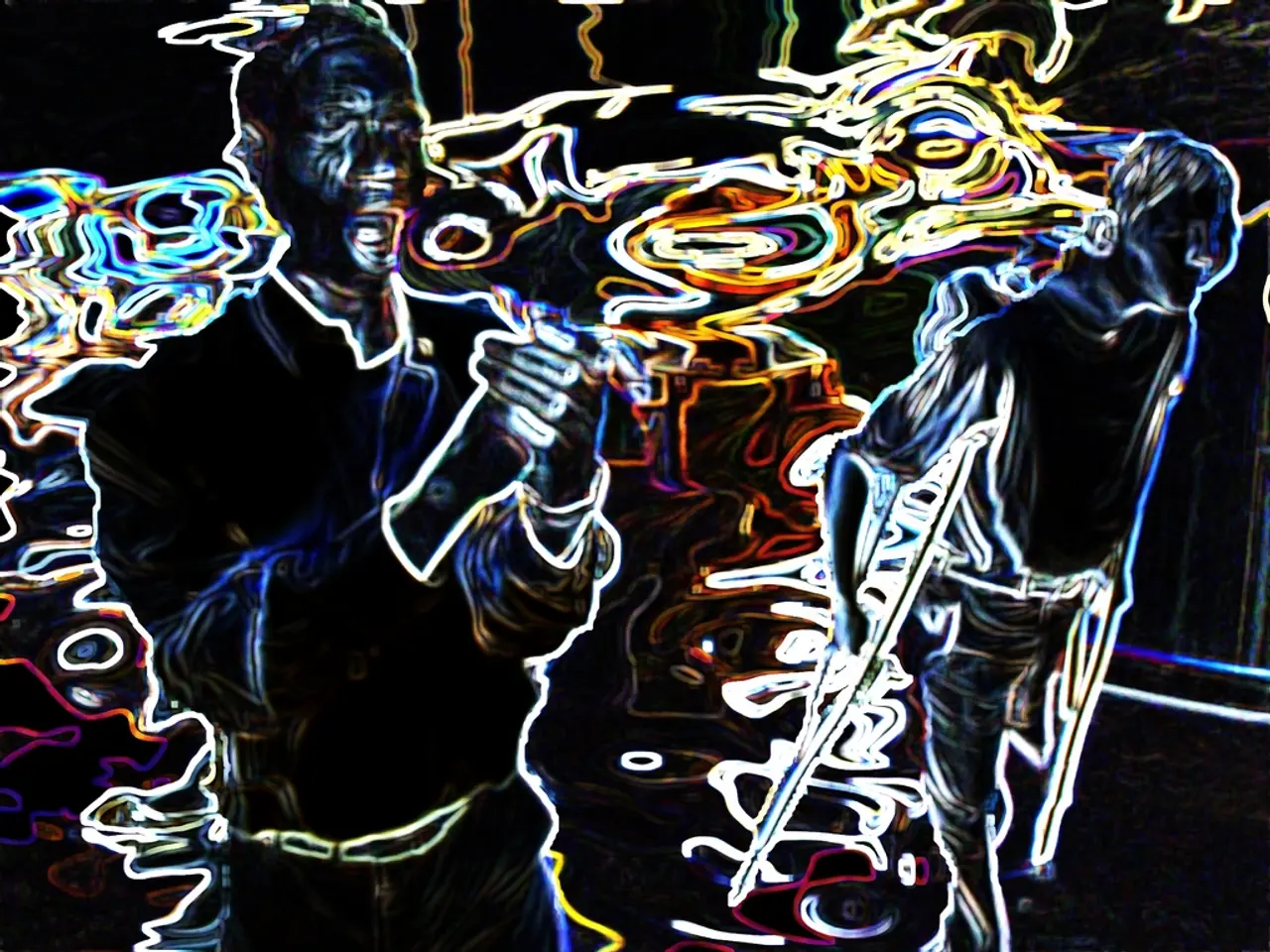Deceptive visual trick causes queasiness in viewers
In the realm of optical illusions, one captivating phenomenon that continues to intrigue is the Pinna's Illusory Intertwining Effect. This fascinating illusion, first published in the academic journal "Shifts of Edges and Deformations of Patterns" in 2002, tricks our brains into perceiving layered elements as a 3D image, even though the actual image consists of simple, separate elements without any real overlap.
The Science Behind the Illusion
The illusion works by exploiting key principles of human visual processing.
- Edge Detection and Contrast Enhancement: Our visual system is highly sensitive to edges and contrasts. When adjacent shapes or lines have alternating colors or phases, the brain enhances the boundaries between them, creating a perception of interlacing.
- Gestalt Principles: The illusion exploits Gestalt principles such as good continuation and figure-ground segregation. The brain tends to interpret continuous lines or curves as connected, so when shapes are positioned just so, the viewer perceives a smooth intertwining pattern even if none physically exist.
- Contextual Modulation: Surrounding visual context affects perception. The specific arrangement of repeating elements leads the brain to interpret the pattern as a weave or braid rather than isolated figures, due to contextual cues that bias perception towards continuity and linking.
- Neural Interpretation of Ambiguous Visual Information: When presented with ambiguous or conflicting cues, the brain attempts to resolve uncertainty by generating the most plausible interpretation. In Pinna's Illusory Intertwining Effect, the visual system resolves the ambiguity in favor of an intertwined pattern, creating the illusion of weaving.
The Deceptive Dance of Circles
At first glance, the overlapping circles in Pinna's Illusory Intertwining Effect appear to distort and move in 3D. However, upon closer inspection, it can be analysed by following each circle around from the top to the bottom to notice the lack of overlap. The illusion is deceptive, as the circles do not actually overlap but are laid out next to each other in a simple way.
The brain struggles to determine if the illusion is made of circles or spirals, and our peripheral vision plays a role in this confusion. Staring at the illusion for too long is not advised due to potential headaches and nausea. Despite these challenges, the illusion remains one of the best optical illusions around, captivating viewers with its hypnotic, chilling, and surprising nature.
In conclusion, Pinna's Illusory Intertwining Effect arises because of the way our brain enhances edges, groups elements into continuous patterns, and interprets ambiguous visual cues, leading to the perception of intertwining shapes where only simple, separate elements exist. This illusion reveals fundamental aspects of human visual processing and how perception is often a creative interpretation rather than a direct representation of reality.
- The captivating Pinna's Illusory Intertwining Effect, a 3D illusion, demonstrates the creative nature of human visual processing, particularly in edge detection and contrast enhancement.
- The illusion exploits the Gestalt principle of figure-ground segregation, causing the viewer to perceive a smooth intertwining pattern where none physically exist.
- The specific arrangement of repeating elements in the illusion leads to contextual modulation, making the brain interpret the pattern as weave or braid rather than isolated figures.
- The intricate dance of circles in the illusion offers an artful example of neural interpretation of ambiguous visual information, resolving uncertainty in favor of an intertwined pattern.
- Despite the potential discomfort associated with prolonged viewing, the illusion's hypnotic, chilling, and surprising qualities make it one of the best optical illusions in exploring health-and-wellness aspects related to mental health.
- The Pinna's Illusory Intertwining Effect, like many optical illusions, serves as a testament to the intersection of science and design, transforming simple, separate elements into a captivating layout that stimulates our brain's sophisticated mechanisms of perception.




